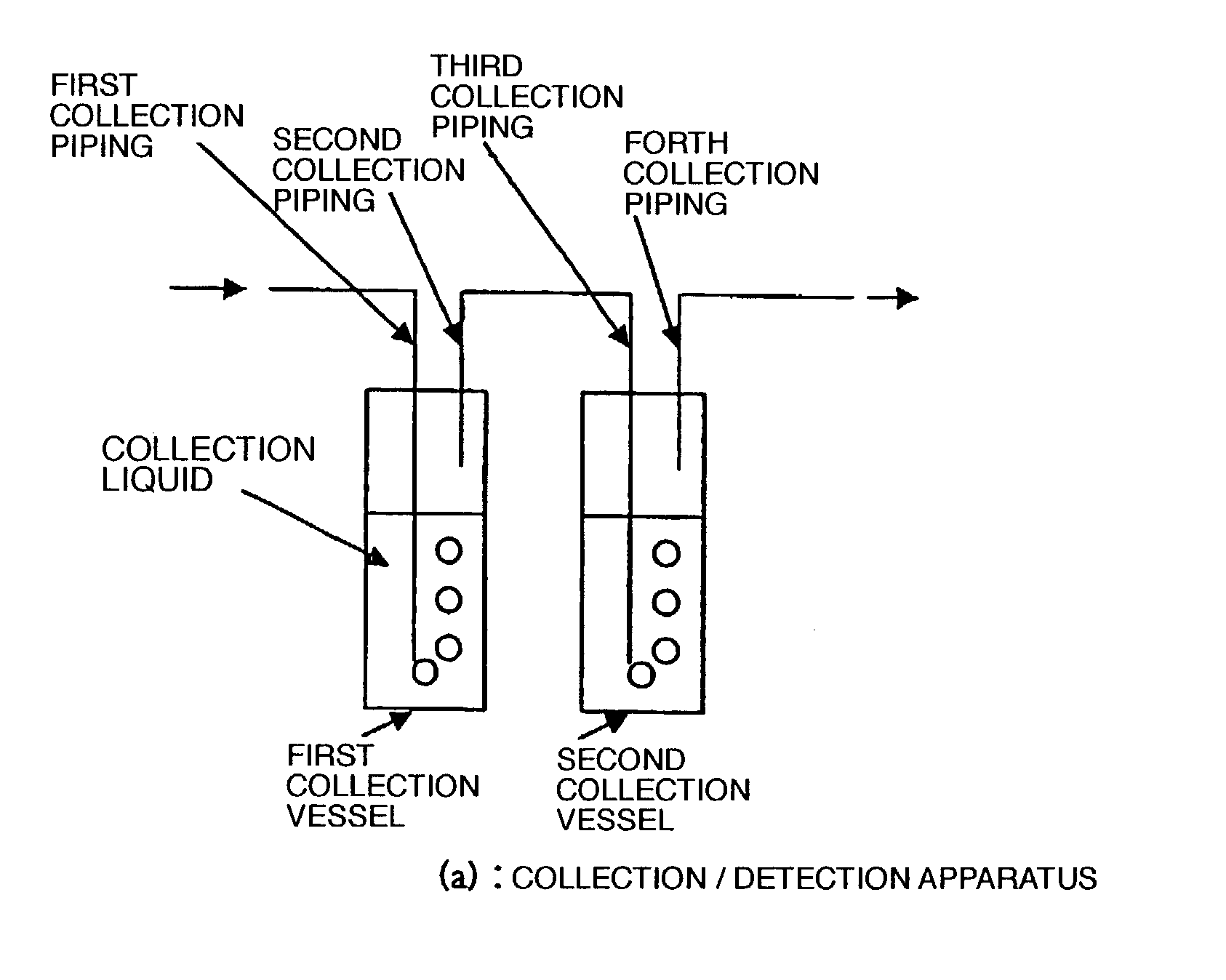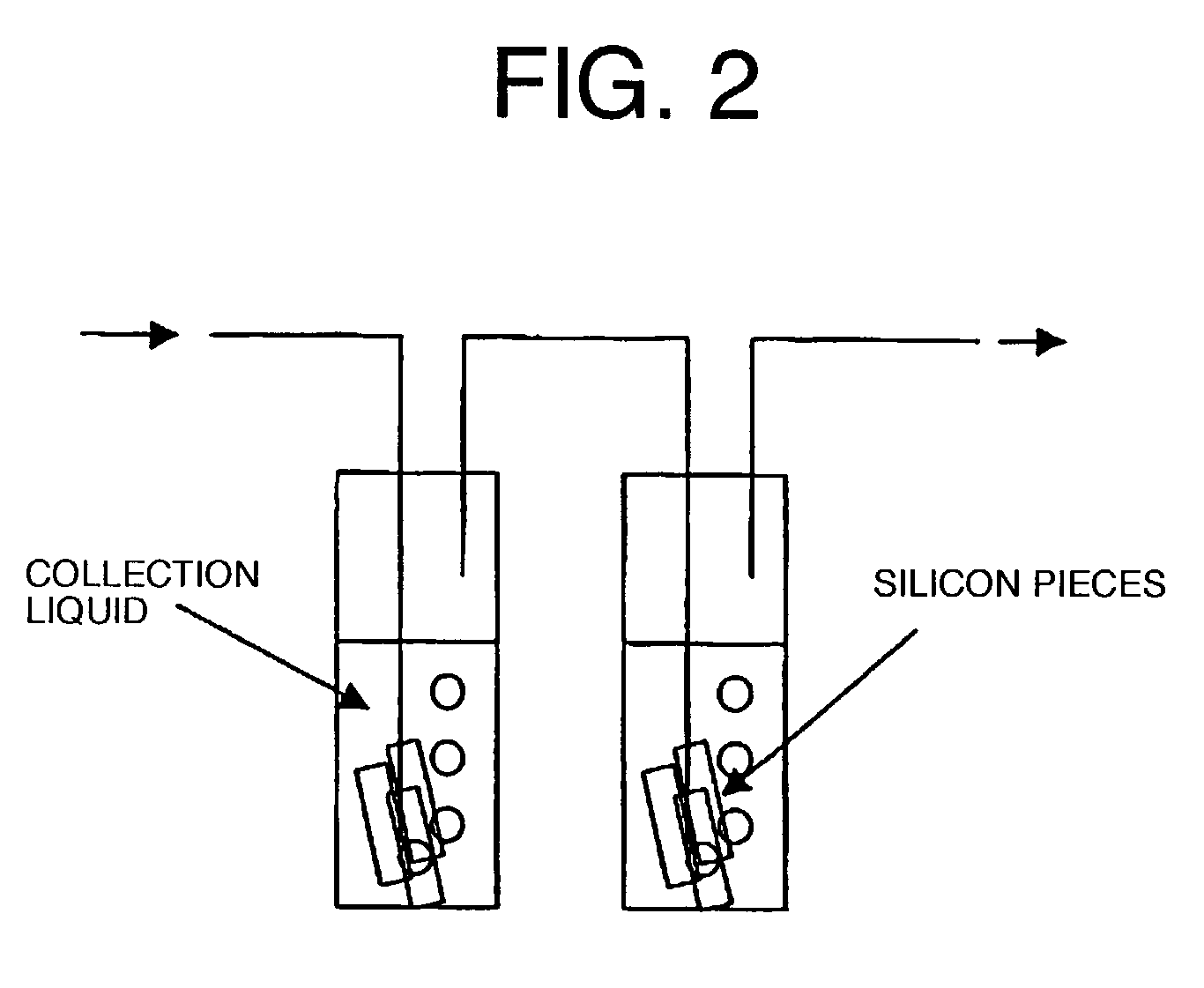Method of collecting chemically contaminating impurity constituents contained in air
a technology of impurity constituents and air, which is applied in the field of collecting chemically contaminating impurity constituents contained in air, can solve the problems of various quality deteriorations, unstable process conditions, and yield deterioration, and achieve high sensitivity and high accuracy
- Summary
- Abstract
- Description
- Claims
- Application Information
AI Technical Summary
Benefits of technology
Problems solved by technology
Method used
Image
Examples
first embodiment
[0026]FIG. 1(a) is a schematic illustration showing a collection / detection apparatus for carrying out a first embodiment of a detection method according to the invention, for collecting chemically contaminating impurity constituents contained in circulating air inside a clean room for semiconductor manufacturing plants, incorporating the function of collecting the chemically contaminating impurity constituents contained in air. FIG. 1(b) is a schematic illustration showing an overall system wherein the collection / detection apparatus is installed on the inlet side and the outlet side of a chemically contaminating impurity constituent's removal apparatus, respectively.
[0027]As shown in FIG. 1(a), the method for collection and detection is carried out with a system configuration wherein (1) a first collection piping, (2) a first collection vessel containing a first collection liquid, (3) a second collection piping, (4) a third collection piping, (5) a second collection vessel containi...
second embodiment
[0033]A basic system configuration of a collection and detection unit, adopted for a second embodiment of a method of collecting chemically contaminating impurity constituents in air according to the invention, is the same as that in the case of the first embodiment shown in FIG. 1. The second embodiment differs from the first embodiment in that with the second embodiment, for example, silicon pieces used as adsorbents are dipped in a solution inside a collection vessel at respective stages. As a result, detection efficiency for water-soluble organic substances can be enhanced. Further, advantageous effects of the second embodiment of the invention can be enhanced more than those for the first embodiment. Still further, as for the number of the collection vessels linked together in series, any number thereof may be used with either the first embodiment or the second embodiment.
[0034]Now, the advantageous effects of the invention are recapped as follows. As described hereinbefore, wi...
PUM
| Property | Measurement | Unit |
|---|---|---|
| grain size | aaaaa | aaaaa |
| grain size | aaaaa | aaaaa |
| solubility | aaaaa | aaaaa |
Abstract
Description
Claims
Application Information
 Login to View More
Login to View More - R&D
- Intellectual Property
- Life Sciences
- Materials
- Tech Scout
- Unparalleled Data Quality
- Higher Quality Content
- 60% Fewer Hallucinations
Browse by: Latest US Patents, China's latest patents, Technical Efficacy Thesaurus, Application Domain, Technology Topic, Popular Technical Reports.
© 2025 PatSnap. All rights reserved.Legal|Privacy policy|Modern Slavery Act Transparency Statement|Sitemap|About US| Contact US: help@patsnap.com



